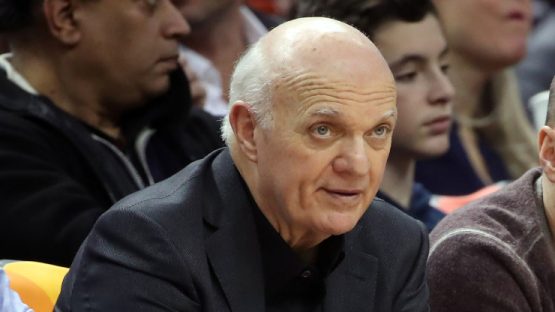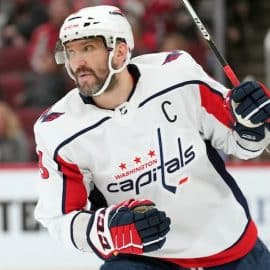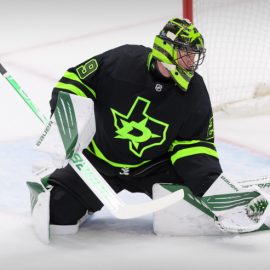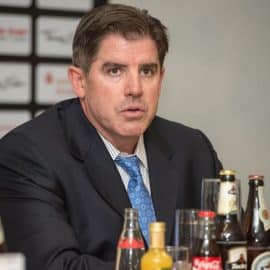When it comes to safely projecting who the Senators’ first line centre may be for the foreseeable future, the situation is murkier than Colin White’s chances of escaping the press box for an extended period.
So, when it became publicly acknowledged that Pierre-Luc Dubois had asked to be traded, it was not a surprise to learn of the Senators’ interest. (Note: if you missed my piece earlier detailing why Dubois would have been a good fit for the Senators, you can read that here.)
List of teams that I believe have inquired with Columbus on Pierre-Luc Dubois, obviously some with more seriousness than others (in no particular order):
Anaheim, Minnesota, Montreal, Winnipeg, Calgary, Ottawa, Rangers, Buffalo, Philadelphia, Detroit, Washington and Arizona.— Pierre LeBrun (@PierreVLeBrun) January 22, 2021
When Darren Dreger reported that talks were heating up last night and that interested teams were being informed that they were no longer in the running, it became clear that Winnipeg was emerging as the favourite. By the time that Saturday morning rolled around, the Jets had acquired Dubois and a third-round pick from the Blue Jackets for Patrik Laine and Jack Roslovic.
Roslovic will turn 24 years old by the end of the month, but to fetch two young players with NHL experience, it was clear that Columbus preferred a trade return that the Senators were ill-suited to match.
Whether adding a goal-scoring winger/power play specialist who struggles to drive possession and has obvious defensive flaws or a forward who may only be a good third-line forward is enough of a return for a 22-year old first-line centre remains to be seen. Järmo Kekalainen exhibited a preference to preserve his team’s competitive window rather than pursue return that would have been headlined by a combination of draft pick and prospect capital.
For some, this is welcomed news.
The notion of sending another sizable opportunity cost so shortly after the failures of the Matt Duchene trade is still engrained in the minds of many fans. And because of it, it has not been uncommon to see parallels be drawn between Dubois’ availability and Duchene’s in the fall of 2017. The circumstances are however a little different.
As I mentioned earlier, Dubois is only 22 years old and will be under team control through the 2023-24 season. Duchene turned 27 in his first season in Ottawa and only provided the team with two seasons of team control. Where Ottawa is in their development curve is also different. In the fall of 2017, the team was still convinced they were good. Despite poor underlying metrics and a record that was inflated through some extra time points, Dorion gave up a substantial package to the Avalanche that notably wound up including the fourth overall pick in the 2017 draft, Bowen Byram.
The Senators’ farm system today is significantly deeper and seemingly has a number of good prospects at every position. What it lacks is a safely projectable first line centre that every Stanley Cup contender seems to have.
The only downside in losing out on Dubois is that good young players rarely become available on the trade market. He had the track record and pedigree while offering the team years of team control that. Dubois would have been a great piece to have mature with the core of young players already here.
With a surplus of prospects, the Senators have the trade capital to get creative with some moves. Pierre Dorion has proven that he is not afraid to pull the trigger on deals, even when they come with red flags and considerable risks that probably should not be ignored. The hope here is that he doesn’t waste the stockpiled depth and prospect capital in other prospective deals that will simply fail to move the needle.
So what do the Senators do now that Dubois is off the market?
Barring some unforeseen situation in which another young centre hits the trade market, the Senators ideally continue to be patient with their rebuild. If the trade route isn’t the mechanism, the Senators will have to find a first-line centre through the draft or develop one internally. After two nondescript games against Toronto (in which he still picked up points), Josh Norris had an excellent game against the Jets on Tuesday night. Together with Brady Tkachuk and Drake Batherson, the ‘Chuk Norris’ line has been one of the brightest sources of optimism in this young season. If Norris can continue to adapt and demonstrate that he can produce and play at a high level, that will be huge for this team’s continued growth.
German phenom Tim Stützle is another intriguing possibility who offers more high-end upside than Norris. The Senators have and probably will continue to be cautious with Stützle’s development. D.J. Smith has tried to insulate Stützle by having him play left wing, but if he can return to the lineup and adjust quickly to the North American game, there should be an opportunity for him to play centre hopefully as soon as this season.
All eyes have essentially been on the Senators’ youngest players through the first four games, but if Norris and Stützle keep trending in a positive direction, it will make things considerably easier on their general manager and this team’s future success.
Lineup Decisions
I hate having to analyze the coaching staff’s lineup decisions five games into a season. It is early and he should be afforded the opportunity to learn what is and is not working. I understand all of that and it is worth pointing out that D.J. Smith has shown a willingness to put young forwards into key roles. Watching Tim Stützle play in the top-six and seeing the ‘Chuk Norris’ line succeed are the biggest highlights to this shortened season. Fans want to watch these young players be regulars.
It is for that reason that I struggle to comprehend is the decision to insert Micheal Haley into the lineup at the expense of younger and more talented alternatives.
Even if it is just for one game, it’s a mind-numbing decision.
The rationale behind the decision was explained in Smith’s media availability earlier this afternoon.
#Sens head coach D.J. Smith talks about Micheal Haley, Christian Wolanin and more before tonight's game against Winnipeg. #GoSensGo | @Molson_Canadian pic.twitter.com/bH3RD0VR10
— Ottawa Senators (@Senators) January 23, 2021
The Senators waived Rudolfs Balcers to protect an Alex Galchenyuk, who will spend his third game in the press box tonight. Filip Chlapik, a much more talented player to Haley, continues to rot on the taxi squad. Colin White has played sparingly in only two of the team’s first four games.
The pattern early on clearly shows that this organization is comfortable playing ineffective veterans in depth roles.
In 31 minute of five-on-five ice time per NaturalStatTrick.com, the opposition has generated approximately 75-percent of the shots (CF%), 83-percent of the shots on goal (SF%), 100-percent of the goals (GF%), 59-percent of the expected goals (xGF%) and 63-percent of the scoring chances (SCF%) when Cedric Paquette has been on the ice. Paquette may block shots and throw his body around enough to fulfill D.J. Smith’s qualifications for a player who’s hard to play against, but these metrics show otherwise. He’s an ineffectual player who deserves a turn out of the lineup. The same courtesy can be extended towards Artem Anisimov and Austin Watson.
I understand that it is certainly more risk averse to lose with veterans in the lineup than it is to roll a bunch of kids, but eventually there is going to come a time when we’re no longer early into the season and affording the coaching staff the benefit of the doubt.
Eventually, the Senators are going to have to let the kids play and develop.
Add The Sports Daily to your Google News Feed!






